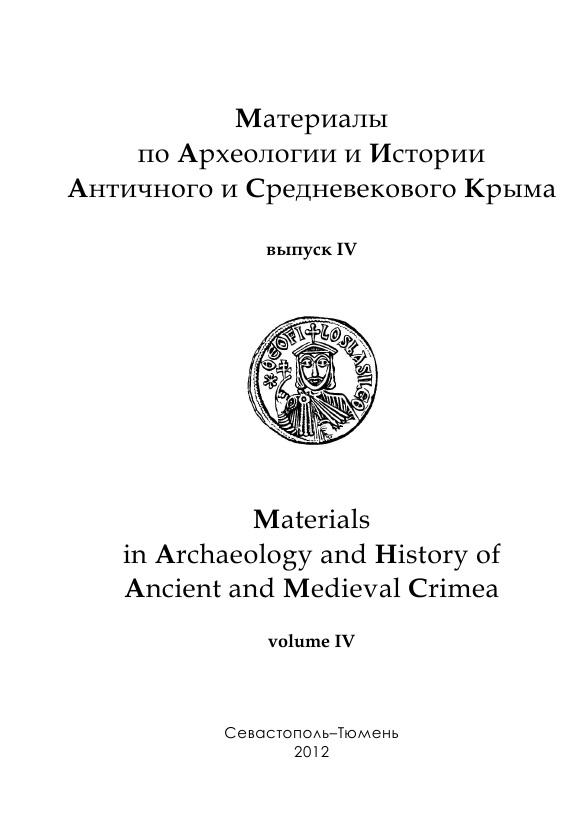История с «Географией», или об одном казусе крымской христианской топонимики
The story of the "geography" or about one incident Crimean Christian place names
Author(s): N.V. DneprovskiySubject(s): Archaeology, Cultural history, Ethnohistory
Published by: Нижневартовский государственный университет
Keywords: Crimea; Christian toponymy; cave church; αγιογράφος
Summary/Abstract: In 1773 Russian navigator I. Baturin, while mapping the Akhtiar (Sevastopol) harbour, have noted on his map a cave church with a strange dedication. It seemed to him that local inhabitants called it «The Geography» church («Geographia» in Russian). In Soviet, atheistic, period well-known archaeologist N.I.Repnikov supposed that this church have been really consecrated in the name of St. Eugraphius («Evgraphij» in Russian spelling), and his opinion is widespread till nowadays among the scholars. But, unluckily, the fact is that Greek Orthodox Church has not such a saint as St. Eugraphius, but only St. Eugraphos (whose name in Russian is pronounced as «Evgraph»). Our assumption is that Russian sailor have written the name exactly according to his understanding, because he was a sailor and a navigator. So, the geography was the most important thing for him, meanwhile by no means could he know the original word which the Crimean Greeks told him. That is, up to present time the icon-painter in Greece is called « αγιογράφος», or, plural, «αγιογραφία». But this word have not been included into Greek-Russian vocabularies of that time. And it sounds almost exactly as the Russian word «Geographia» which was well-known to the sailor. The cave church have been devastated for a long time, but the remains of mural paintings were still decorating its walls. So, the name which Baturin was told («αγιογραφία») was not the real consecration of the church (which have been long-forgotten already). It was only reflecting the reminiscences about the icon-painters which have decorated the church and, probably, have been living in the nearby cave cells. Mr. Kostas Asimis, the representative of Russian monastery of St. Panteleimon (Mount Athos), shares our opinion
Journal: Материалы по археологии и истории античного и средневекового Причерноморья
- Issue Year: 2012
- Issue No: 4
- Page Range: 194-206
- Page Count: 13
- Language: Russian

